By: Helsing Admin
A well-thought-out preventive maintenance program is going to save an association significant money over the long haul. Components and equipment not properly maintained wear out prematurely and in the long run cost the Association far more money than it would have cost had they been maintained properly. Unfortunately, many associations do not incorporate a preventive maintenance plan as an HOA responsibility and as a result raise the cost of assessments unnecessarily. The more complex the association, the more important it is to have an adequate maintenance program and the cost of not having one becomes far more significant. While it is critically important that high-rises and podium-type structures have complete preventive maintenance programs, is also necessary that even small single-family home developments have such programs in order to maximize the use of the homeowners’ assessments.
The heart of a preventive maintenance program begins with a well-thought-out maintenance manual. That manual should contain three parts: a collection of owners manuals for all manufactured products; a summary by component of the maintenance to be performed including the frequency and the skill required; and finally a checklist or mechanism to give visibility to the Board of Directors. This manual then becomes both a useful tool for ensuring adequate maintenance is accomplished, but also becomes a budgeting tool to ensure adequate monies are in hand to perform the maintenance.
The first part listed above is simply a collection of all the owner’s manuals that came with the product. Making a copy of them and including them in the manual helps ensure they do not get lost (as opposed to leaving them taped to the back of the appliance, tossed in a drawer, or buried in some records box in someone’s house!). Not all of the association’s components will have such a manual, but for those that do this manual becomes the basis for the second part of the manual.
The summary portion of the manual should summarize by component what needs to be done, how often it needs to be done, how it needs to be done, and what skill is necessary to accomplish the maintenance. On manufactured products, the manufacturer’s maintenance recommendations should be followed. On components without such recommendations, maintenance requirements can be researched or expert opinion obtained to determine what should be done and at what frequency. In addition, some preventive maintenance is simply inspecting, but even in these cases it is important to identify the proper skill so that qualified persons are doing the inspections. It is reasonable to expect a manager to ensure storm drains are not visibly clogged, but not reasonable for those persons to inspect roofs for wear.
Once the manual is completed, it becomes a scheduling and budgeting tool as well. Some maintenance and inspections will be operating costs done monthly, quarterly, semi-annually, or annually. These costs flow into the operating budget. Others may take place at a lesser frequency, and they become part of the reserve funding plan.
The final portion should be a checklist that can be maintained and reviewed by management and the board of directors to ensure the work is in fact being accomplished. In fact, it may be a series of checklists that roll up into a master checklist. For example, most irrigation valves require minimal inspection with maintenance scheduled quarterly. Adding a requirement that the landscaper accomplishes and complete a form or mini-checklist as part of his contract results in a series of documents that roll up in and support the master checklist. Some required maintenance will be under contract (for example, most elevator maintenance is included in the maintenance contract). In these cases, however, it is important to ensure all required maintenance is in those contracts.
Typically, the order of the manual is opposite the order from which it was built and described above. The checklist becomes a never ending tool for HOA responsibility, management, and visibility. The summary of frequency, skill, and description of work becomes the base document normally referenced concerning how to accomplish the work. The collection of manufactured products’ owner’s manuals becomes the base document upon which much of the manual is built.
Without a properly constructed maintenance manual, preventive maintenance becomes sketchy at best – but more often simply non-existent. The result is early failure of components, residual damage, and increased costs that could be avoided. Does your association or those that you manage have an adequate manual?
Articles are for advertising and general information by The Helsing Group, Inc. They are not intended to provide legal advice, but rather reflect our opinions as Community Association managers and Consultants. Readers should not act on issues raised in our newsletters or websites without consulting legal counsel.
Copyright 2012
The Helsing Group, Inc.
All Rights Reserved



